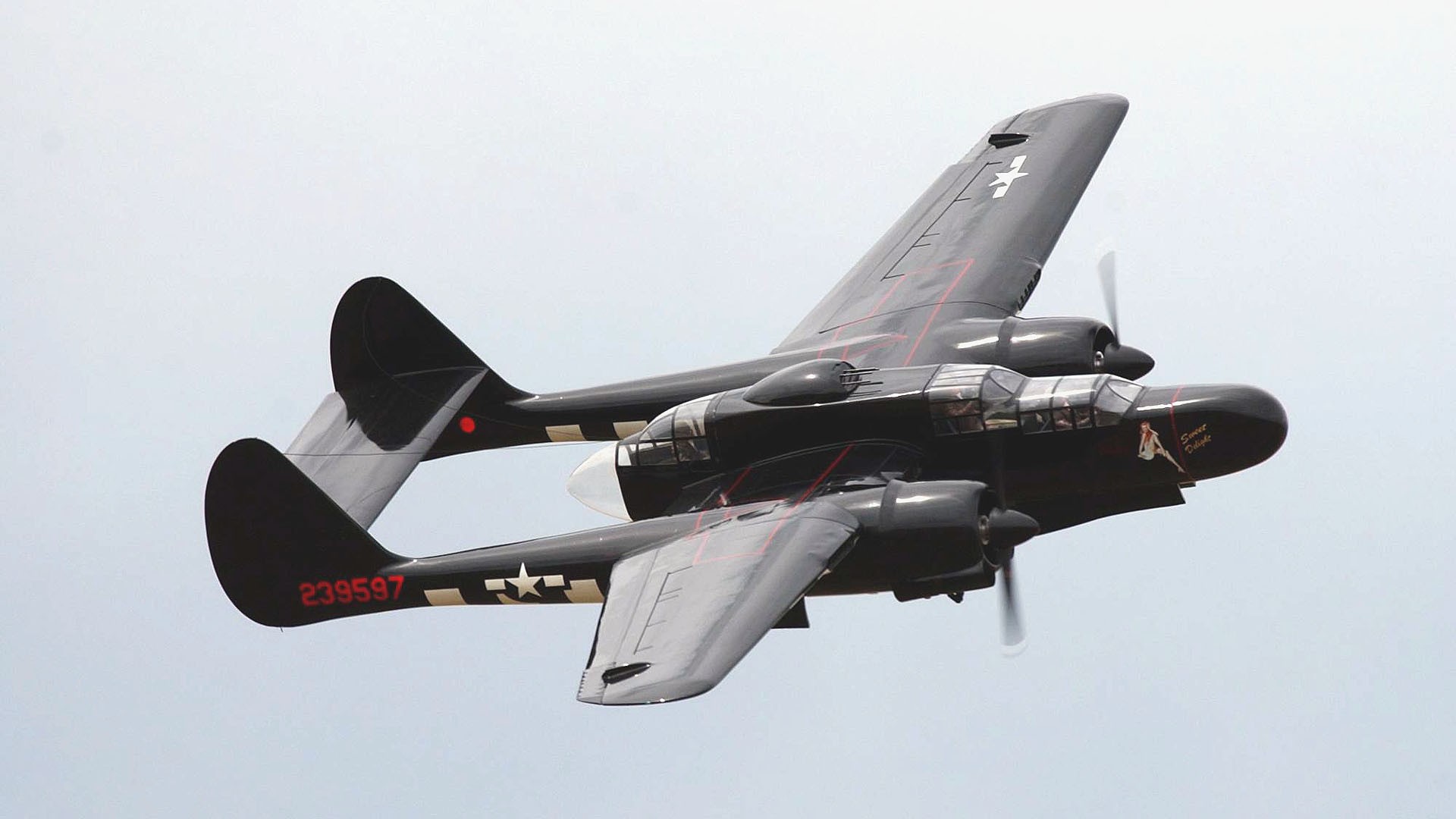The Japanese military never really caught up to the other major players in terms of Radar development during World War II. This meant that American (and British) night fighters operating in the Pacific theater had a lot less work intercepting enemy fighters, and a lot more time dealing with night bombing raids, and conducting air to ground and anti-shipping attacks, tasks which their heavy cannon armaments made them well suited for.
In the American Army Air Force, the primary night fighters were the P-70 Nighthawk, a development of the A-20 Havoc attack bomber, and the P-61 Black Widow. It was a P-61 Lady in the Dark that is unofficially credited with making the last kill of the war, forcing a Japanese fighter into the ocean.
| P-70 Nighthawk in flight. Introduced in 1942, it was totally supplanted by the P-61 Black Widow by 1944. |
 |
| P-61C (flying model) in flight. Because I can never have enough Black Widow pictures |
For the Navy, another solution was required. The medium bomber sized night fighters of the AAF simply wouldn’t work on a carrier. Fortunately, the AN/APS-4 (and later AN/APS-6) radars were sufficiently developed that the F6F-3 and F6F-5 Hellcats could carry them in a set of fairings in the belly and right wing. It wouldn't win any beauty contests (not that the Hellcat ever would anyway) but it was effective. So effective in fact, that the replacement for the F6F-5N would be the radar equipped F4U-5N Corsair, which would serve through the Korean conflict.
| F6F-5 Hellcat. Note the telltale fairing on the right wing containing sensors. |

No comments:
Post a Comment